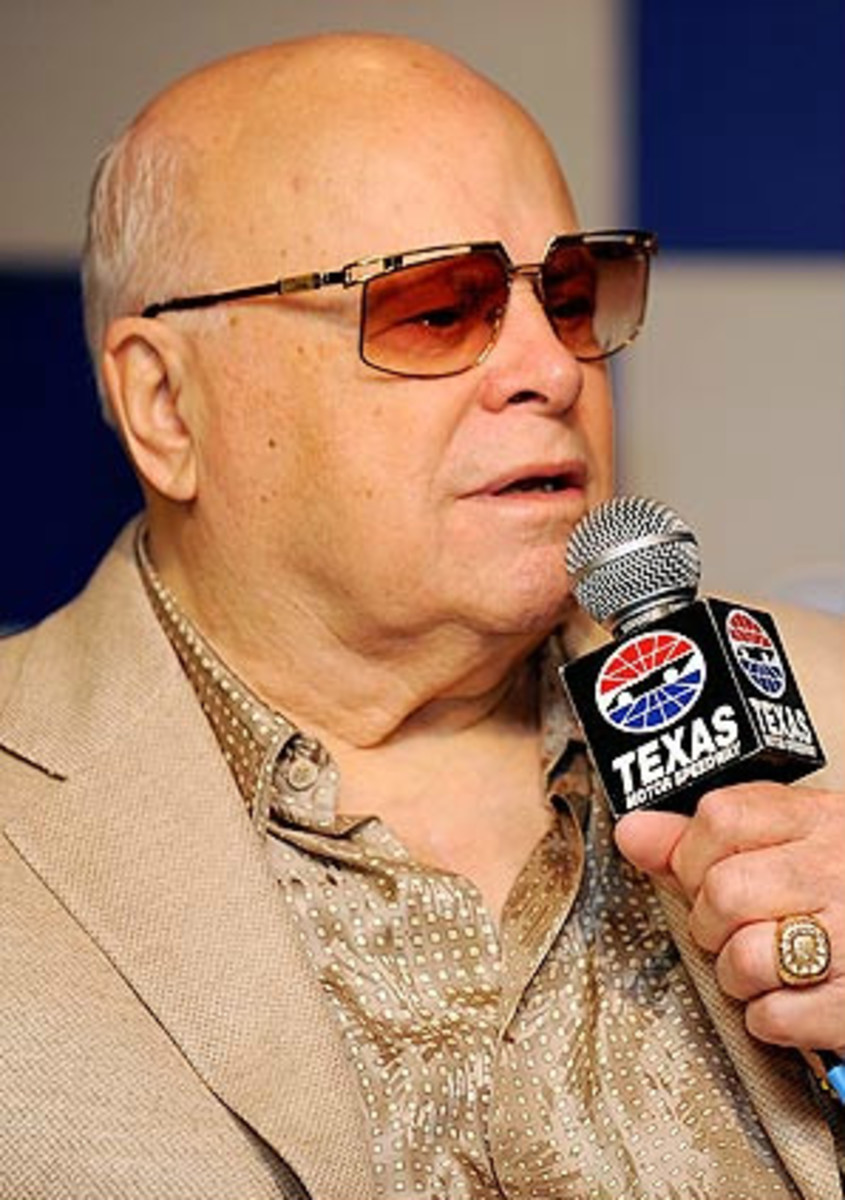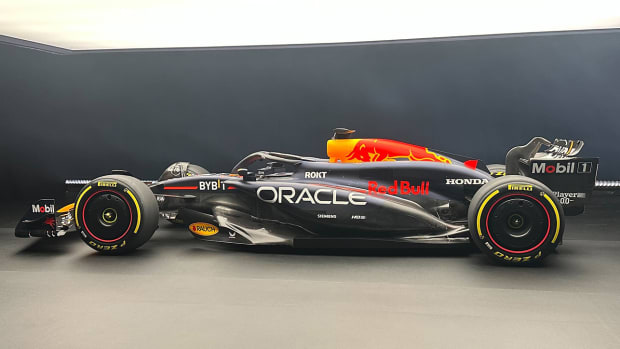Will modifications at Bristol bring the fans back to the racetrack?
The demand was so high that when Speedway Motorsports Inc. purchased the .533-mile, high-banked short track, it quickly expanded the seating to 160,000. With car-crashing action and massive grandstands completely circling the track, NASCAR at Bristol was like the WWE at "The Big House."
But after NASCAR's popularity peaked and began to decline, empty seats began to appear at Bristol. At first, BMS officials considered it an aberration, but over time the empty seats became more and more a trend, and this past March the track was barely 60 percent full. With 160,000 seats, it's pretty hard to disguise 65,000 or so empty seats.
In 2007 SMI chairman Bruton Smith and BMS officials decided to alter the old layout at the track by adding transitional banking in the corners. The hope was that the extra groove of racing room would make the racing better. But instead of the "Bump and Run" that race fans loved, where drivers had to make contact and actually move a car out of the way to make a pass, there were long periods of green-flag racing and drivers were able to pass without incident.
Drivers actually preferred that style of racing, but many of the fans were vocally opposed. So in an attempt to return Bristol to its iconic status, last week Smith announced significant modifications would be made to the racing surface in an attempt to return it to its treacherous layout.
"I said when this process began last month that I would listen to what the fans said they wanted," Smith said. "After a week to 10 days, there was no question that the overwhelming majority was asking for alterations to the track. Since March 28, when we announced that changes would be made, we have listened to fans, heard from drivers and talked to engineers about what to do and how much time we had to do it. Once we knew the direction, we located the right equipment to make it happen."
The variable banking was considered to be the wave of the future, and it has been effectively used at tracks such as Texas Motor Speedway, Homestead-Miami Speedway and the reconfigured Phoenix International Raceway to name a few. But this was Bristol, a track many fans considered NASCAR's "Fenway Park" because of its unique high banking on a short track.
"The majority of fans we heard from said they wanted adjustments made, and the bulk of those said the progressive banking was what they didn't like," Smith said last week. "So, that's the focus of our efforts."
Bruton Smith is a man who refuses to admit a mistake, so for him to concede that progressive banking at Bristol was ill-founded is quite a revelation.
But the question remains: Will this change be enough to bring the fans back to Bristol?
There are many reasons for Bristol's attendance decline. First, the seating was overbuilt. Sure, it kept up with the demand in the early 2000s, but even when the seats are filled, there aren't enough hotel rooms in the East Tennessee area to accommodate the ticket holders.
Years ago, I grew tired of the $350 per night rates to stay near the track and decided it was easier to drive up on Friday morning, return home on Friday night (a 300-mile round trip) and then do it all over again on race day. Others have stayed in hotels as far away as Asheville, N.C., Knoxville or Wytheville, Va.
According to some Sprint Cup drivers, the lack of affordable hotel rooms is a major reason attendance has dropped off.
"I think that the reason that attendance is down is that they spiked the hotel rates so bad there in that town, as they do most of the towns," Dale Earnhardt Jr. said. "Gas is expensive. To stay in Knoxville or somewhere like that doesn't make a lot of sense because of how expensive gas is. It's just not as affordable to go to events as it used to be."
Four-time Cup champion Jeff Gordon, who is tied with Kyle Busch as the active victory leader at Bristol (five wins), conceded that the cost of attending a race at Bristol scares many fans away, but said that the style of racing might also be playing a part.
"I had a lady who tweeted me and said, 'This two- and three-wide racing at Bristol is just driving me crazy. I'm not coming back to another Bristol,'" Gordon said. "The fans want to see excitement. They want to see bumper-to-bumper action and us getting upset with one another. Of course they want to see that. But they want to see us walk away from an accident. It's not that they want to see the dangerous side; they just want to see drama. I think we could still have drama with a track like Bristol that has two- and three-wide racing."
Smith maintains that he consulted NASCAR drivers about the change, but Kevin Harvick said nobody talked to him.
"I'm happy that they're going through the effort that they're going through to try to fix it," Harvick said. "Obviously it didn't sound like Bruton [Smith] wanted anybody's opinion that drives a car. He went to Darrell [Waltrip], so we'll see how all that works out for him."
Earnhardt was not offended that nobody asked for his thoughts on the change because he has confidence that decisions can be made without the input of every driver in the series.
"I'm not disappointed," Earnhardt said. "Anytime somebody does something or makes a decision in this sport, I don't expect someone to pick my brain about it or get my opinion about it. It would have been comforting to know that he [Smith] had spoken to a handful of drivers that actually raced on the track this past year. I don't know that he didn't. ... They own the track, they make the decisions they want to make. They made the one they feel is best for them and I support it. I feel like the track will be similar. I think the racing is fine, I think the racing will be just fine when we go back."
Denny Hamlin said the major problem with Bristol is the concrete track surface which makes such changes difficult.
"You want to fix it and make it a tough track, you need to pave it," Hamlin said. "Concrete is not the answer as far as that is concerned. They're in a box."
Hamlin's Joe Gibbs Racing teammate Kyle Busch was fairly outspoken against making any changes, especially given that four of his five Bristol wins have come on the current layout.
"It's disappointing to see them change a perfectly good racetrack that promotes good side-by-side racing for a lot of the event," Busch said. "There has been a lot of good racing at Bristol. It's not the 'move the guy out of the way, spin somebody out,' atmosphere anymore and if fans want to see wrecks, then I guess we have to wreck more. It's actually good for us drivers to not have to have those things and not have that kind of drama that we have to deal with, but if the fans need that in order to buy tickets, then I guess we've got to do what we need to do."
Gordon believes the changes will bring the fans back to Bristol.
"I applaud him [Smith] for at least putting that effort into it and the money behind it as well; drawing some attention to it, and I think it's going to really pay off because I think he's already going to have a great crowd for the night race. So it [the repaving] is just going to make it that much stronger. Then he's going to look like a genius and all of a sudden the crowd is going to be back at Bristol."





